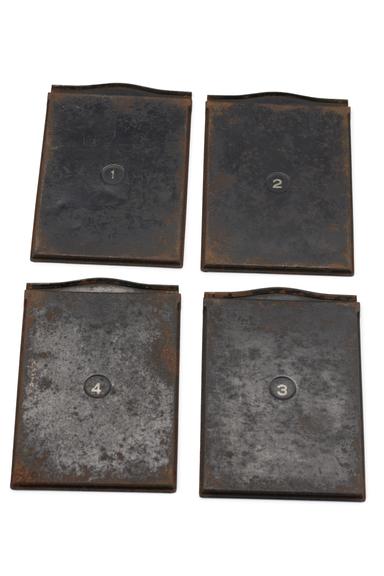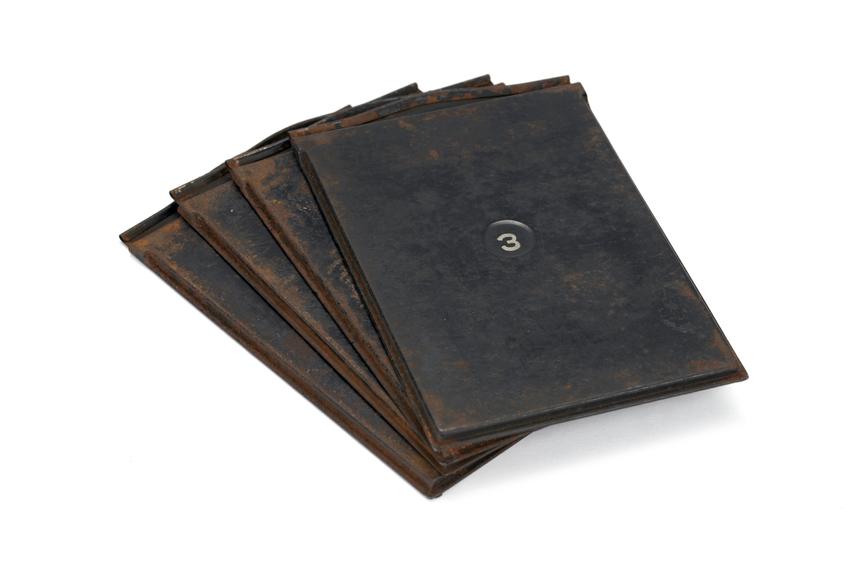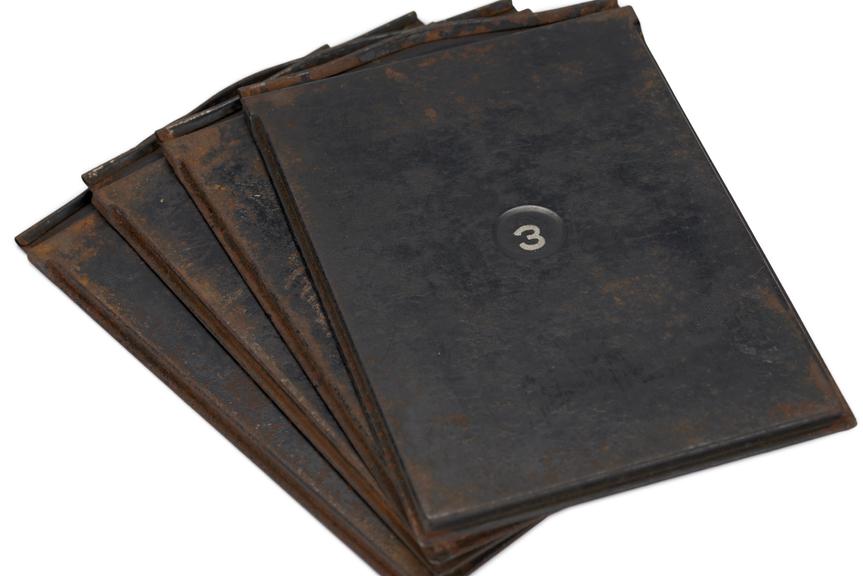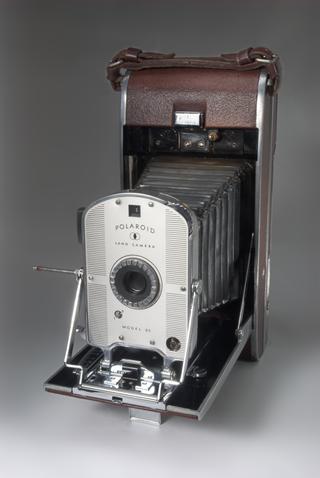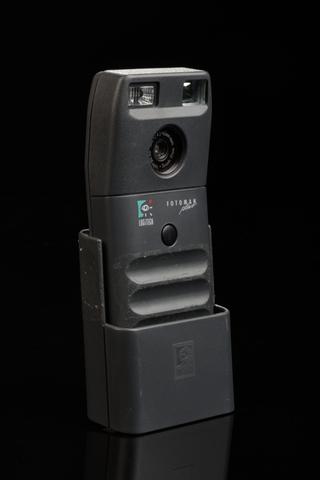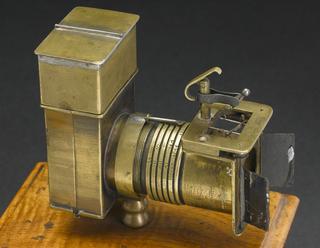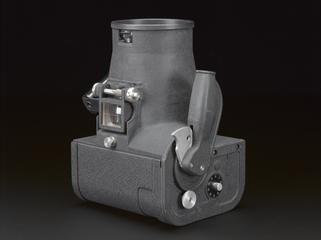Thornton-Pickard "Weenie" folding hand plate camera, with a Lukos II shutter and an Alids "Uno"anastigmat lens.
This is a Thornton-Pickard “Weenie”, a small low-cost camera for the amateur.
Thornton-Pickard was a camera manufacturer, founded in Manchester 1888 by John Thornton and Edgar Pickard, but based in Altrincham from 1891. The new company’s products, particularly camera shutters, were initially designed by Thornton, who had already been manufacturing photographic equipment under his own name. Despite Edgar Pickard’s death in 1897 and John Thornton’s resignation in 1898, the firm gradually grew to become an important camera manufacturer in the years leading up to the First World War.
As its name suggests, the “Weenie” is a small camera, which folded up to be carried in a pocket. In the early 20th century Thornton-Pickard introduced several simple camera models for the rapidly growing amateur photography market, including the Weenie, which was on-sale for a few years around 1910. The Weenie was a plate camera, which produced a negative image on a glass plate coated with light-sensitive chemicals, which was developed in a chemical process to produce a finished photograph. A fresh plate needed to be loaded into the Weenie for each photograph.







